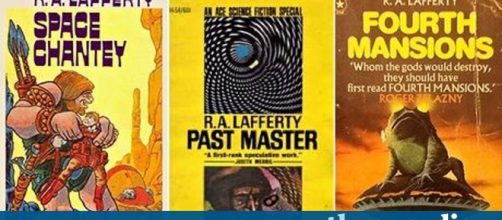The announcement by #NASA that a Belgian led team of astronomers found seven earth sized planets around a near neighbour of our sun has shown that science fiction is often the literature of the possible. Star Trek, Alien and Predator may be far away, but other contributions are with us today.
World’s potential richest man
Famous scientist and science fiction writer Arthur C Clarke often complained that if he had patented one of his ideas he would have been the world’s richest man.
In a 1945 article he outlined the idea that would have become the current network of stationary satellites revolving around the world that revolutionized international communications.
His claim would have undoubtedly come true, but in a world still reeling from World War 2 there was little likelihood that such a project may have been possible, but a few short decades did prove him correct.
Clarke however did give us two images that are part of our imagination of possible encounters with alien civilizations.
Alien encounters
The first in his 1953 novel “Childhood’s End” describes the arrival of mysterious aliens on Earth. The image he described of massive spaceships suddenly appearing over the Earth’s major cities has been used by films such as “Independence Day” and also in television series such as “V”:
The second image he provides us is undoubtedly the most famous and it is the monolith on the moon that is the central image of the classic Stanley Kubrick film “2001, a space odyssey” which came from the director’s collaboration with Clarke and was inspired by the author’s short story “The Sentinel” which was published in 1951.
Naturally we do not know how the first encounter will take place, but yesterday’s announcement gives us a firm belief that there is life amongst the stars waiting to be found. Undoubtedly the first encounter will be ever stranger than those imagined in science fiction, we can only wait to find out.
New inventions and new worlds
Science fiction gave us robots by Czech writer Karel Čapek in his play R.U.R. (Rossum's Universal Robots), published in 1920 which introduced to the world the Czech word for “forced labour”.
This concept was then developed in many variations by the legendary science fiction author and scientist Isaac Asimov.
We now see various forms of robot in everyday use in the home and in factories.
To this invention must be added our many forms of communication devices and computers in their various shapes and forms as a simple beginning. Scientists have begun looking at “transporters” as introduced by the original 1960s television series “Star Trek” and time will tell what other inventions have been predicted by imaginative authors.
Science fiction is the literature of the possible and also of the “what if” that allows us to consider almost every facet of our daily existence in new ways. Wednesday afternoon at NASA we saw that the reality can be even stranger and more wonderful than may have been imagined.
The seven new planets around TRAPPIST-1 are the first confirmation that there is a true universe to be explored and that science fiction gave us a traveller’s guide to follow.

